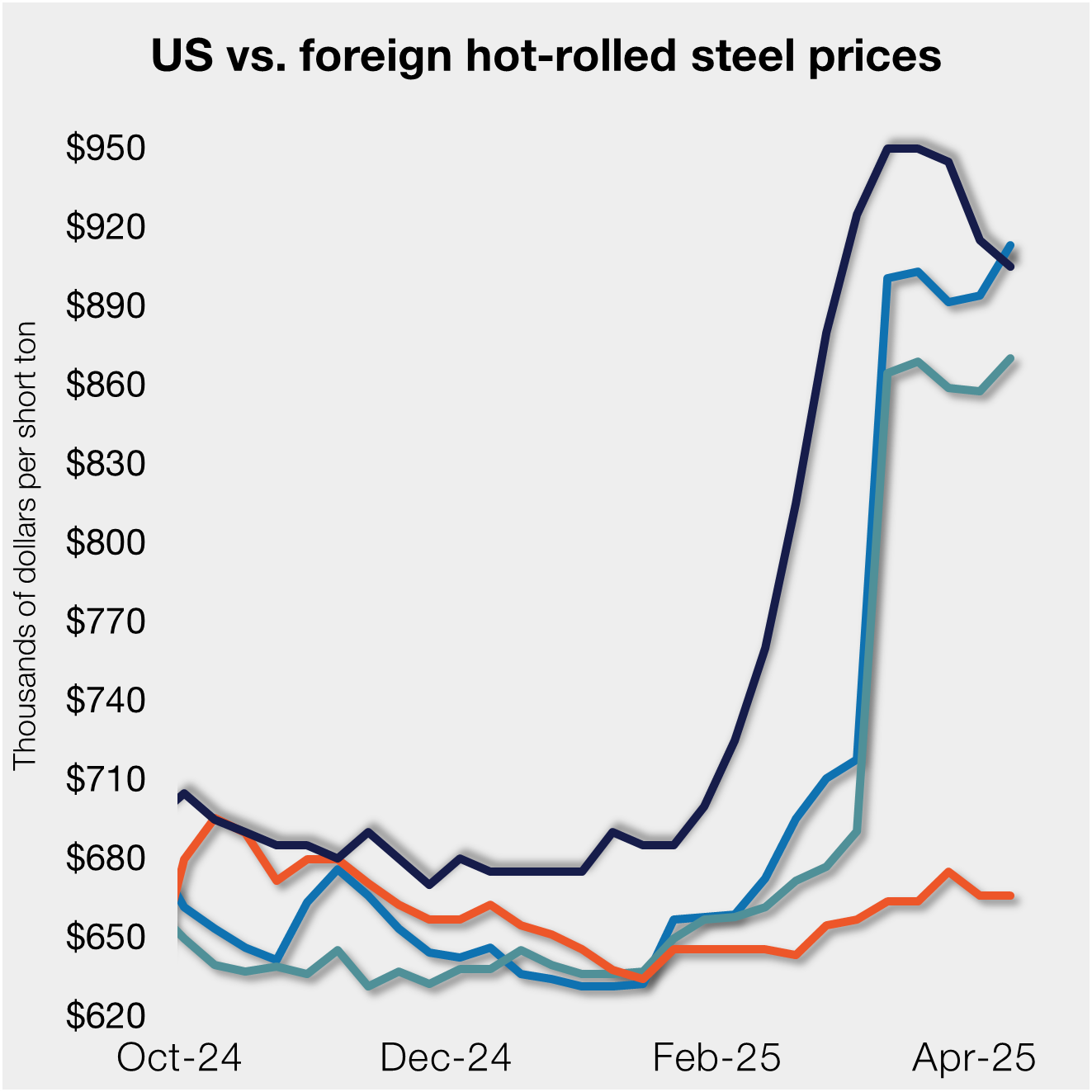Steel Products
Construction Jobs and Wages Rise in February
Written by Sandy Williams
March 9, 2018
Construction employment increased by 61,000 jobs in February to the highest level since June 2008 as rising pay rates enabled the industry to attract more workers, according to an analysis of new government data by the Associated General Contractors of America. Association officials, however, cautioned that the Trump administration’s newly imposed steel and aluminum tariffs have the potential to undermine future employment growth for the sector.
“It is frustrating to see the potential benefits of the president’s tax cuts and regulatory reforms being undermined by his short-sighted decision to impose tariffs,” said Stephen E. Sandherr, the association’s chief executive officer. “The best way to help the U.S. steel and aluminum sector is to continue pushing measures, like regulatory reform and new infrastructure funding, that will boost demand for their products.”
Ken Simonson, the association’s chief economist, said industry pay rates are 10 percent higher than the private sector average. “Steep tariffs on steel and aluminum will add to rapidly rising materials costs. The combination of higher materials and labor costs could push some contractors out of business and make many projects unaffordable,” he said.
{loadposition reserved_message}
Construction employment totaled 7,173,000 in February, a gain of 61,000 for the month and 254,000, or 3.7 percent, over 12 months. The economist pointed out that the year-over-year growth rate in industry jobs was more than double the 1.6 percent rise in total nonfarm payroll employment.
Residential construction—comprising residential building and specialty trade contractors—added 25,400 jobs in February and 107,500 jobs, or 4.0 percent, over the past 12 months. Nonresidential construction (building, specialty trades, and heavy and civil engineering construction) employment increased by 35,400 jobs in February and 147,200 positions, or 3.5 percent, over 12 months.
While the industry added over a quarter-million jobs during the past year, the number of unemployed job seekers with recent construction experience only fell by 49,000 between February 2017 and February 2018. The unemployment rate in construction dropped to 7.8 percent last month from 8.8 percent a year earlier. This suggests that most of the new hires at construction firms are from other sectors of the economy or new entrants to the labor force, Simonson said.
One reason so many people may be leaving other sectors for construction is that average hourly earnings in the industry climbed to $29.47, a rise of 3.3 percent from a year earlier. In contrast, the average for all nonfarm private-sector jobs rose just 2.6 percent in the past year, to $26.75. The construction rate is now 10.2 percent higher than the private-sector average, the economist said.
Construction officials said the new employment figures are an encouraging sign that demand for construction services remains robust. But they cautioned that the new tariffs will raise costs for firms, many of which are locked into fixed-price contracts with little ability to charge more for their services.
This will leave many employers with less money to invest in equipment and personnel, said AGC.

Sandy Williams
Read more from Sandy WilliamsLatest in Steel Products

Construction growth slowed in March on tariff woes: Dodge
The decline comes after reaching a record high in January to kickstart the year.

Return of S232 zapped gap between US and EU HR prices, Asian HR remains cheaper
Domestic hot-rolled (HR) coil prices declined this week for a third straight week. Most offshore markets bucked the trend and gained ground. Uncertainty in the US market around tariffs, especially after “Liberation Day,” caused US prices to slip as buyers moved to the sidelines. It’s unclear to date whether the 90-day pause on the more […]

SMU Steel Demand Index momentum slows further
SMU’s Steel Demand Index growth eased again, according to early April indicators. The slowdown comes after the index reached a four-year high in late February.

SMU Community Chat replay now available
The latest SMU Community Chat webinar reply is now available on our website to all members. After logging in at steelmarketupdate.com, visit the community tab and look under the “previous webinars” section of the dropdown menu. All past Community Chat webinars are also available under that selection. If you need help accessing the webinar replay, or if your company […]

US light-vehicle sales accelerate in March
US light-vehicle (LV) sales increased to an unadjusted 1.59 million units in March, more than a 30% surge over February and 10.7% above year-ago totals, according to US Bureau of Economic Analysis data.
